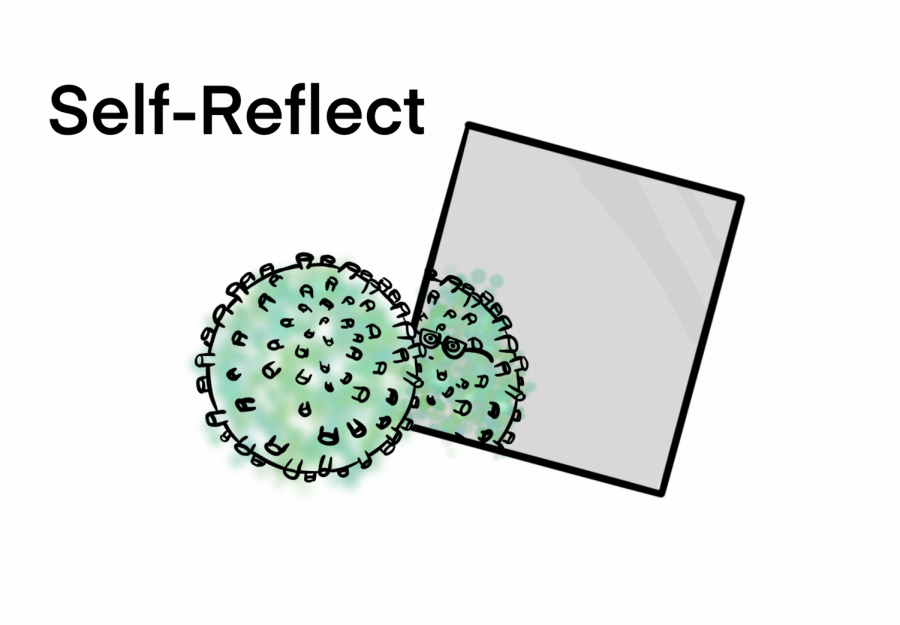Self-reflection and growth
Losing a normal year of high school can be a hard pill to swallow. It’s made easier, though, when that lost time still comes with the opportunity to change and grow as a person.
April 9, 2021
What changes did individuals undergo during quarantine? Original artwork by Sarabeth Wester
“Being isolated for so long definitely changed me,” says Junior Sophia Berry. “I was free to explore things that I liked without having to worry about the judgment of others. My sense of self was vastly improved.”
Berry isn’t alone in this sentiment. A trend that has recently been going around the video sharing platform TikTok involves users showing pictures of them before and after quarantining, to show how they have changed and grown without the pressures of the outside world holding them back.
One such video, linked here, gained over one million likes. One of the top comments left on it, which gained over forty-thousand likes itself, read “I honestly think this corona thing is what the world needed for people to heal and find themselves. That’s what I did and I’m way more confident in me.”
What brought about this widespread change in young people? What about a pandemic, which stole a whole year of the time that’s supposed to be the best of their lives, would promote any sort of positive change?
To find out, let’s go back to the very first day of quarantine, one year ago.
March 13, 2020. The last bell rang, and students poured out of their seventh period classrooms with a little bit of extra pep in their steps. Their moods were bolstered by the knowledge that some distant virus was adding a week to their spring breaks.
Sentiments like “I’m so excited to do absolutely nothing for a week” were echoed by millions of students all around the world. Famous last words.
A week turned into two, and two weeks into a month, and all of a sudden, it’s March 13, 2021. 365 days, and life still abides by the guidelines of the CDC.
In just one trip around the Sun, Earth has become a place of masks, stock-piled hand sanitizer, and social distancing. It’s impressive in a bittersweet sort of way how quickly people found their way to a “new normal.”
Humans are remarkably good at adapting to changes in their environments. Whether it be the biological process of maintaining homeostasis or the process of adapting to a more overarching lifestyle change such as surviving in a pandemic, our species has mastered the art of quick change.
Adjusting to life in a pandemic was not the hardest part of the past year. The hardest part was being able to slow down.
People have a tendency to power through any obstacles they face. Rather than reflect on hardships, they fill their schedules with as many things as possible so they aren’t forced to confront their struggles.
That’s the thing about quarantine, though. It was a forced slowing of pace. Being quarantined rigidly for a few months and then less rigidly for the better part of the year meant lots of free time.
One of the only things to do was to think.
“Who am I?” “What is my purpose?” “How can I better myself?”
These are questions that everyone must confront at one point or another, but, as it turns out, a pandemic is a very opportune time to start.
By pondering these things, people, especially teenagers, could begin to gain a better sense of themselves. Away from the feared judgment of peers, they could take some risks too. Try new things, reconnect with family, or focus on what they wanted their lives to become.
It’s hard to come to terms with who you are when you’re constantly surrounded by other people your age and worrying about what they might think. Being alone largely alleviated that problem, and teenagers gained a respite unlike anything even their parents’ generation had known.
